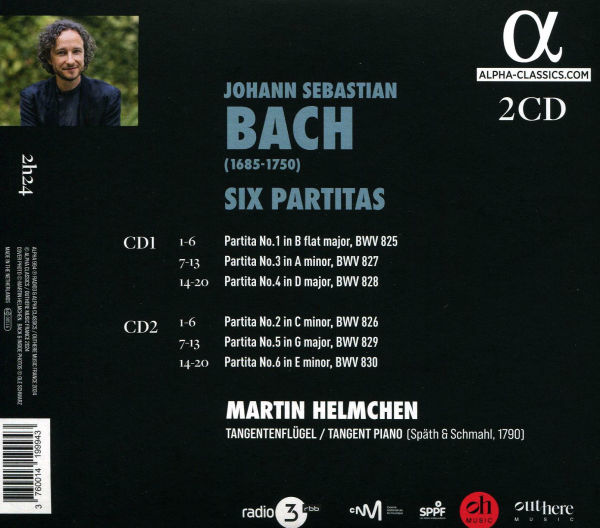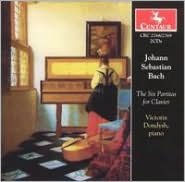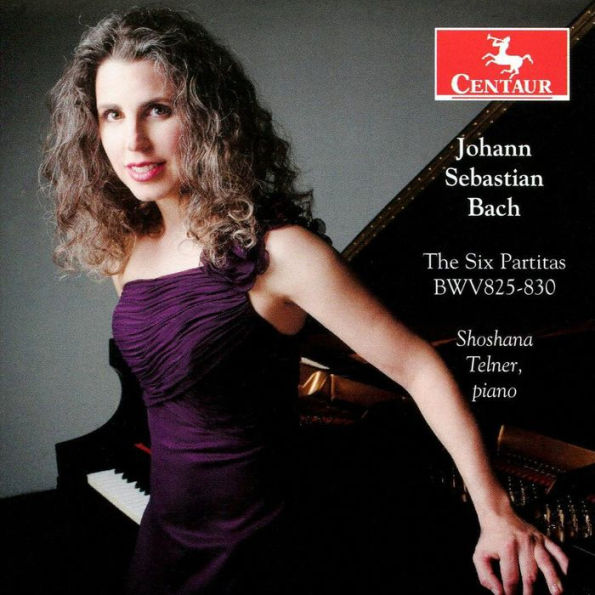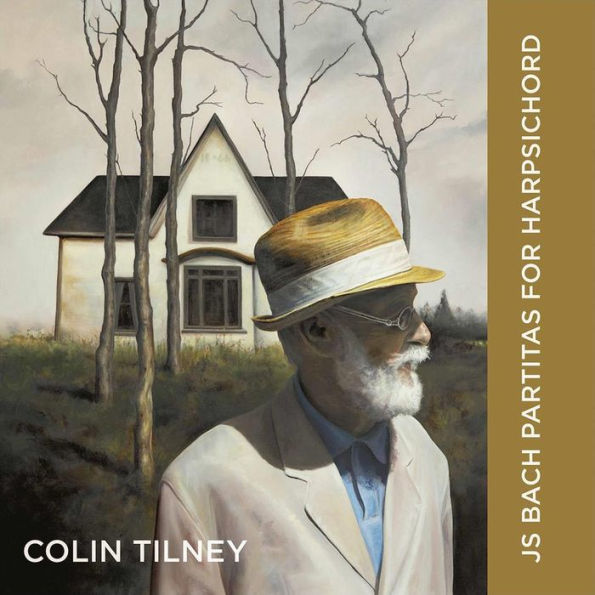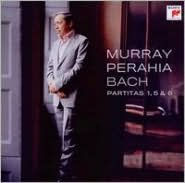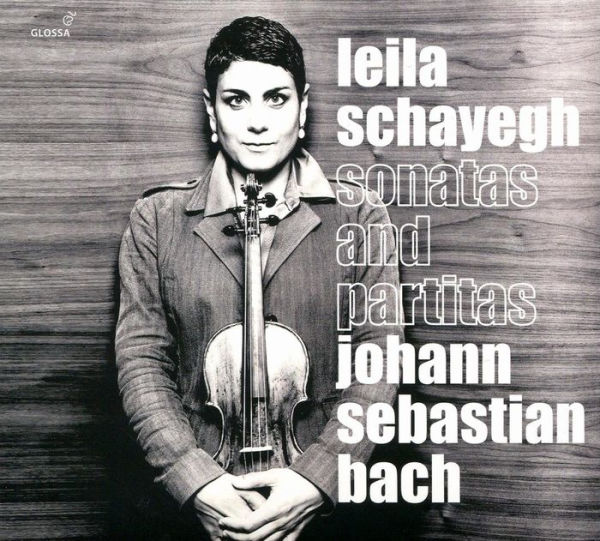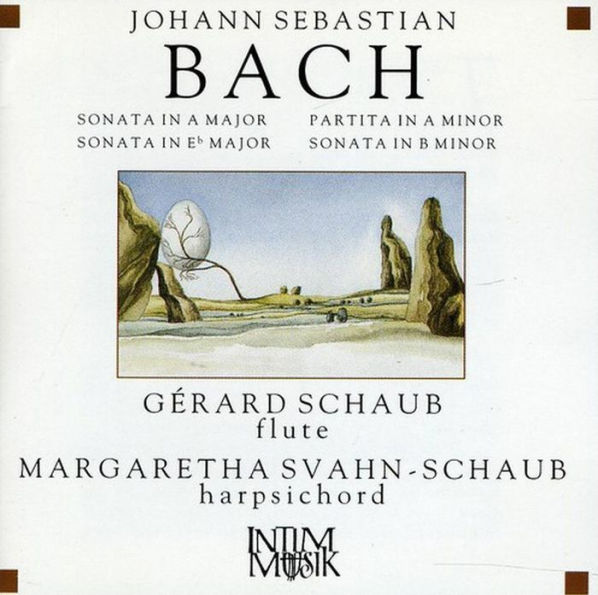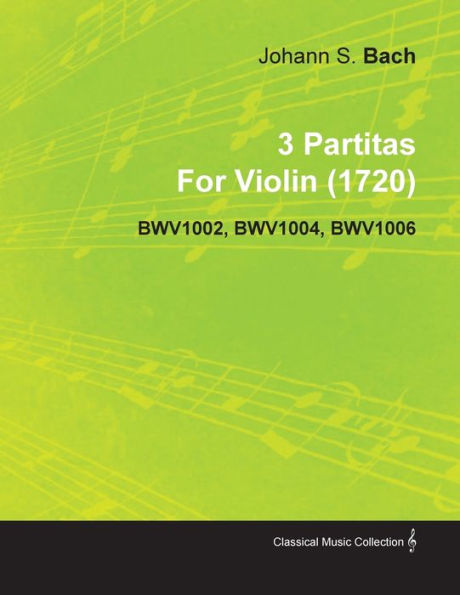Home
Bach: Six Partitas
Barnes and Noble
Loading Inventory...
Bach: Six Partitas
Current price: $32.99
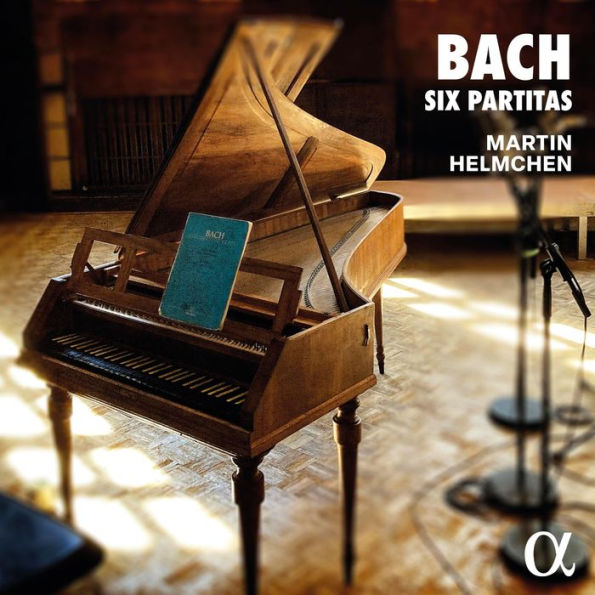
Barnes and Noble
Bach: Six Partitas
Current price: $32.99
Loading Inventory...
Size: OS
*Product information may vary - to confirm product availability, pricing, shipping and return information please contact Barnes and Noble
There are many reasons a musician would choose to perform and record
Bach
's Partitas for keyboard; one is that it's something of a rite of passage for keyboardists attempting to reach wider audiences, but as
Martin Helmchen
notes here, musicians "need to find one's own voice" while also staying true to the sound of the music as
intended. The draw to this album for many will surely be the instrument
Helmchen
chose to express his voice, an original Späth und Schmahl tangent piano ("tangentenflügel") from 1790 on loan for this recording from
Georg Ott
, who restored the instrument after its 2006 discovery in the estate attic of Classical-period publisher Johann Esaias von Seidel. It is an interesting-sounding instrument, sharing qualities of a harpsichord, clavichord, and fortepiano. It has stops and dampers, which
makes full use of, offering a range of expressivity that one would not get from a harpsichord while not entirely losing the sound one would expect from the era in which the works were written. Consider the Sarabande of the
Partita No. 3, BWV 827
; the strings sound as if plucked by a finger (or a harpsichord jack) without the same resonance one would get from a harpsichord, and wholly different than a sound a modern piano would make.
is a consistently precise player, and the tangent piano's action responds well, so
's counterpoint rings clear in these performances. His tempos are generally more deliberate than many other recordings on the market, which might not be to everyone's taste, but the album is recommended for the opportunity to hear this fascinating instrument. ~ Keith Finke
Bach
's Partitas for keyboard; one is that it's something of a rite of passage for keyboardists attempting to reach wider audiences, but as
Martin Helmchen
notes here, musicians "need to find one's own voice" while also staying true to the sound of the music as
intended. The draw to this album for many will surely be the instrument
Helmchen
chose to express his voice, an original Späth und Schmahl tangent piano ("tangentenflügel") from 1790 on loan for this recording from
Georg Ott
, who restored the instrument after its 2006 discovery in the estate attic of Classical-period publisher Johann Esaias von Seidel. It is an interesting-sounding instrument, sharing qualities of a harpsichord, clavichord, and fortepiano. It has stops and dampers, which
makes full use of, offering a range of expressivity that one would not get from a harpsichord while not entirely losing the sound one would expect from the era in which the works were written. Consider the Sarabande of the
Partita No. 3, BWV 827
; the strings sound as if plucked by a finger (or a harpsichord jack) without the same resonance one would get from a harpsichord, and wholly different than a sound a modern piano would make.
is a consistently precise player, and the tangent piano's action responds well, so
's counterpoint rings clear in these performances. His tempos are generally more deliberate than many other recordings on the market, which might not be to everyone's taste, but the album is recommended for the opportunity to hear this fascinating instrument. ~ Keith Finke
There are many reasons a musician would choose to perform and record
Bach
's Partitas for keyboard; one is that it's something of a rite of passage for keyboardists attempting to reach wider audiences, but as
Martin Helmchen
notes here, musicians "need to find one's own voice" while also staying true to the sound of the music as
intended. The draw to this album for many will surely be the instrument
Helmchen
chose to express his voice, an original Späth und Schmahl tangent piano ("tangentenflügel") from 1790 on loan for this recording from
Georg Ott
, who restored the instrument after its 2006 discovery in the estate attic of Classical-period publisher Johann Esaias von Seidel. It is an interesting-sounding instrument, sharing qualities of a harpsichord, clavichord, and fortepiano. It has stops and dampers, which
makes full use of, offering a range of expressivity that one would not get from a harpsichord while not entirely losing the sound one would expect from the era in which the works were written. Consider the Sarabande of the
Partita No. 3, BWV 827
; the strings sound as if plucked by a finger (or a harpsichord jack) without the same resonance one would get from a harpsichord, and wholly different than a sound a modern piano would make.
is a consistently precise player, and the tangent piano's action responds well, so
's counterpoint rings clear in these performances. His tempos are generally more deliberate than many other recordings on the market, which might not be to everyone's taste, but the album is recommended for the opportunity to hear this fascinating instrument. ~ Keith Finke
Bach
's Partitas for keyboard; one is that it's something of a rite of passage for keyboardists attempting to reach wider audiences, but as
Martin Helmchen
notes here, musicians "need to find one's own voice" while also staying true to the sound of the music as
intended. The draw to this album for many will surely be the instrument
Helmchen
chose to express his voice, an original Späth und Schmahl tangent piano ("tangentenflügel") from 1790 on loan for this recording from
Georg Ott
, who restored the instrument after its 2006 discovery in the estate attic of Classical-period publisher Johann Esaias von Seidel. It is an interesting-sounding instrument, sharing qualities of a harpsichord, clavichord, and fortepiano. It has stops and dampers, which
makes full use of, offering a range of expressivity that one would not get from a harpsichord while not entirely losing the sound one would expect from the era in which the works were written. Consider the Sarabande of the
Partita No. 3, BWV 827
; the strings sound as if plucked by a finger (or a harpsichord jack) without the same resonance one would get from a harpsichord, and wholly different than a sound a modern piano would make.
is a consistently precise player, and the tangent piano's action responds well, so
's counterpoint rings clear in these performances. His tempos are generally more deliberate than many other recordings on the market, which might not be to everyone's taste, but the album is recommended for the opportunity to hear this fascinating instrument. ~ Keith Finke
